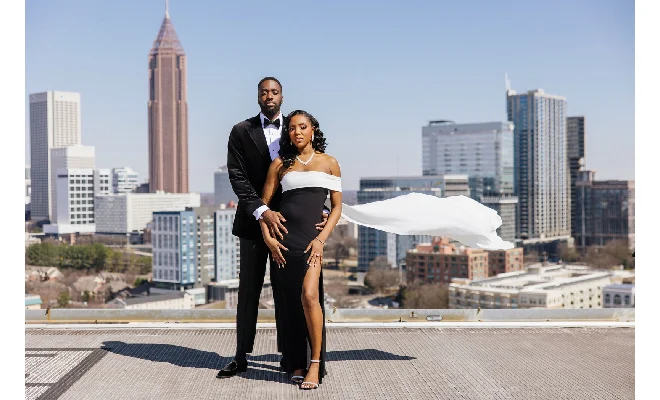
What Makes Florida Home Designs Stand Out?
Florida home designs stand out because they are thoughtfully made for the state’s unique climate and lifestyle. They focus on beating the hot, humid summers by using materials that absorb heat during the day and release it at night, helping to keep indoor temperatures balanced naturally. Covered porches, lanais, and outdoor living spaces let people enjoy fresh air while staying protected from sun or rain. Designs also blend indoor and outdoor areas with big windows and sliding glass doors to bring in natural light and connect with nature. Plus, homes meet strict building codes for hurricane resistance, offering safety alongside style through diverse architectural influences like Mediterranean, coastal contemporary, and ranch styles. This mix of comfort, function, resilience, and connection to Florida’s environment truly sets these homes apart.
Climate-Responsive Features for Florida’s Hot and Humid Weather
Florida home designs carefully address the state’s hot, humid climate by incorporating features that reduce heat and promote natural cooling. Wide eaves, overhangs, and covered porches are common, providing shade that blocks the intense summer sun and lowers indoor temperatures. Cross-ventilation is a key strategy, with windows and openings aligned to allow airflow to pass through rooms, cooling interiors without heavy reliance on air conditioning. Materials like concrete and brick with high thermal mass help stabilize indoor temperatures by absorbing heat during the day and releasing it at night. Roofs are often light-colored or coated with reflective materials to minimize heat absorption, while elevated ceilings and open floor plans improve air circulation and create a cooler, more spacious feel. Large windows are thoughtfully shaded or treated with UV-resistant coatings to let in natural light without adding excessive heat. Exterior walls use breathable stucco or siding to handle humidity and prevent moisture buildup. Landscaping with native plants and trees provides additional shade and reduces surrounding heat, while porches, lanais, and verandas offer protected outdoor living spaces that can be enjoyed year-round despite Florida’s sun and frequent rain. Practical elements like sloped roofs and drainage systems manage heavy rainfall effectively, ensuring homes stay dry and comfortable.
- Wide eaves, overhangs, and covered porches block intense summer sun and reduce indoor heat gain
- Cross-ventilation through aligned windows and openings maximizes natural airflow for cooling
- High thermal mass materials like concrete or brick absorb heat during the day and release it at night
- Light-colored or reflective roofs minimize heat absorption
- Elevated ceilings and open floor plans improve air circulation and create cooler spaces
- Large windows are shaded or treated with UV-resistant coatings to allow light without excessive heat
- Breathable stucco or siding materials on exterior walls help withstand humidity and reduce moisture buildup
- Landscaping with native plants and trees provides natural shade and lowers surrounding temperatures
- Porches, lanais, and verandas create outdoor living areas protected from sun and rain
- Rainwater management systems such as sloped roofs and drainage handle frequent heavy rains
Blending Indoor and Outdoor Living Spaces Seamlessly
Florida home designs excel in creating a smooth flow between indoor and outdoor areas, making the most of the state’s pleasant climate. Expansive sliding glass doors often open wide to merge living rooms with outdoor patios, forming a single, large living space that invites natural light and fresh air inside. Floor-to-ceiling windows frame views of tropical gardens, water features, or natural landscapes, strengthening the bond with nature and enhancing the sense of openness. Screened lanais act as insect-protected outdoor rooms, comfortably used year-round for dining or relaxing without the nuisance of bugs. Outdoor kitchens and dining setups are thoughtfully placed near indoor kitchens, making entertaining easy and convenient. To maintain a consistent look, materials inside the home often match or complement those used outside, supporting a continuous, cohesive design. Outdoor seating areas feature comfortable furniture and ceiling fans, extending their usability during Florida’s warm months. Transitional spaces such as covered porches serve as buffers between climate-controlled interiors and open outdoor zones, easing the change from inside to outside. Retractable screens or shades offer flexibility to control sunlight and keep insects away, adapting to changing weather or time of day. Thoughtful lighting design links indoor and outdoor areas after dark, using soft, warm lights to create inviting evening atmospheres. Durable flooring materials like tile or wood are selected for both indoor and outdoor use, ensuring visual flow and withstanding Florida’s humid conditions. Together, these features create homes where indoor and outdoor living blend naturally, reflecting Florida’s lifestyle and environment.
Building Homes to Withstand Hurricanes and Storms
Florida homes are built with strong measures to face hurricanes and storms. Impact-resistant windows and doors are common, designed to stop flying debris from breaking glass and causing damage inside. Roofs use reinforced materials and special construction techniques to resist powerful wind uplift, helping prevent costly damage during storms. Many homes include shutters, either operable or fixed, that protect windows and doors by acting as an extra shield against high winds and rain. Elevated foundations are standard to raise homes above flood levels, reducing the risk of water damage during heavy rains or storm surges. Building codes require secure connections between roofs, walls, and foundations, ensuring the entire structure holds together when winds get intense. Concrete block or reinforced masonry walls provide added strength to stand up against wind pressure. Proper storm drainage systems around the home help manage water runoff and prevent flooding in lower areas. Garage doors, often vulnerable points, are reinforced or built to withstand high winds. Landscaping is carefully planned to avoid large trees or branches near the house, minimizing hazards from falling debris. In some homes, backup power options and safe rooms are included to offer extra protection and peace of mind during emergencies. These features work together, making Florida homes more resilient and able to better protect their occupants when severe weather strikes.
Distinct Architectural Styles Found in Florida
Florida’s home designs reflect a blend of styles shaped by the state’s unique climate and cultural history. Coastal Contemporary homes are common along the shoreline, known for their open floor plans, high ceilings, and large windows that capture ocean or landscape views, making the most of natural light and scenery. Mediterranean-style houses feature stucco walls, low-pitched tiled roofs, arches, wrought iron details, and symmetrical facades, drawing from European influences and often found in upscale neighborhoods. Spanish-style homes share some Mediterranean traits but stand out with flat or low-pitched clay tile roofs, terracotta accents, Roman arcades, and wooden casement windows, combining Spanish Baroque and Moorish elements. In Central Florida, Victorian houses present narrow, tall profiles with intricate trim, smaller windows, and detailed porch railings, often preserved in historic districts that celebrate the region’s architectural heritage. Ranch-style homes offer a simpler, single-story layout with attached garages and frequently include screened porches, catering to outdoor living while providing practicality and easy access. Across these styles, roof overhangs and porches are common features, providing shade and comfortable outdoor spaces suited to Florida’s sunny and rainy weather. The choice of materials such as stucco, brick, wood, and tile balances aesthetics with durability, ensuring homes withstand the state’s weather challenges. Color palettes often reflect natural surroundings and cultural roots, enhancing the connection between the home and its environment. Many Florida homes blend traditional elements with modern needs, adapting classic styles to meet the demands of heat, humidity, storms, and a lifestyle centered on both indoor comfort and outdoor enjoyment.
Design Choices That Boost Comfort and Usability
Florida home designs carefully balance style with practical comfort, using features that make daily living easier and more pleasant. Strategically placed windows and skylights bring in plenty of natural light while minimizing heat build-up, creating bright and inviting interiors. Cross-ventilation is another key element, allowing cooler breezes to flow through the home and reduce the need for constant air conditioning. High ceilings add to the sense of spaciousness and help push warm air upward, keeping living areas more comfortable. Open floor plans support smooth movement between rooms and encourage social interaction, while thoughtful layouts often separate public spaces like living rooms from private bedrooms for better privacy and function. Built-in storage solutions such as cabinets, closets, and attic spaces help keep homes organized and free of clutter. Outdoors, shading devices like pergolas, overhangs, and covered patios block harsh sunlight and create cooler spots for relaxation. Tropical landscaping with palms and native plants not only adds charm but also provides natural shade and privacy. Safety features including wider doorways, handrails, and slip-resistant flooring ensure accessibility for residents of all ages and abilities. Many Florida homes are designed with future needs in mind, allowing for easy additions or modifications as families grow or change. These design choices together create homes that are comfortable, usable, and well-suited to both the Florida climate and lifestyle.
Colors and Aesthetics Inspired by Florida’s Environment
Florida home designs often draw directly from the natural surroundings, using color schemes that reflect the state’s water and vegetation. Blues and greens mirror nearby lakes, rivers, and lush plant life, helping homes blend smoothly into their environment rather than stand apart. Earth tones like sandy beiges and soft browns evoke the beaches and natural landscapes, creating a grounded, relaxed feel. Bright accent colors inspired by tropical flowers, such as hibiscus reds or bird-of-paradise oranges, add lively touches without becoming too bold. Architecturally, horizontal layers in the design echo the lines of grasses, shrubs, and tree canopies, visually connecting the structure to the land. Natural materials like wood, stone, and stucco are often left in their neutral or natural finishes to maintain this connection with nature. Trim and exterior details usually highlight key architectural features while keeping harmony with the main palette, ensuring nothing looks out of place. Roof colors tend to be lighter shades to reduce heat absorption and complement the walls, which helps keep homes cooler in the sun. Landscaping colors are carefully chosen to enhance the home’s facade and offer seasonal variety, using native plants that thrive in Florida’s climate. Paint finishes are selected for durability, able to withstand sun, rain, and salt air, especially in coastal areas. Overall, the aesthetic leans toward calmness and a strong link to the outdoors, supporting the easygoing, relaxed lifestyle that Florida living encourages.
Outdoor Living as a Central Part of Florida Lifestyle
Outdoor living spaces in Florida homes are designed as true extensions of indoor rooms, offering areas for seating, dining, and cooking that function year-round. Screened-in porches are a common feature, providing protection from insects while allowing fresh air and views of the outdoors, making it comfortable to enjoy Florida’s warm climate without the nuisance of bugs. To combat the heat and humidity, ceiling fans and shade structures like pergolas or covered lanais are often incorporated, creating cool, breezy spots even during the hottest days. Some homes include small sleeping porches, which offer a restful retreat during warmer months by capturing nightly breezes. Landscaped yards frequently feature patios, fire pits, and water elements that encourage relaxation and social gatherings, while native, low-maintenance plants reduce watering needs and thrive naturally in the Florida environment. Thoughtful outdoor lighting balances safety and atmosphere, allowing homeowners to enjoy their outdoor spaces well into the evening. Outdoor kitchens are placed near the main kitchen for convenience, making casual meals and entertaining effortless. Additionally, pathways link various outdoor areas, encouraging movement and full use of the property, while design choices maintain privacy from neighbors without shutting out the natural surroundings. This emphasis on outdoor living reflects the Florida lifestyle where homes blend comfort, function, and nature into everyday living.



